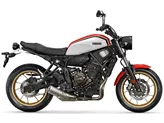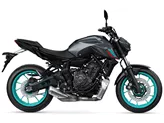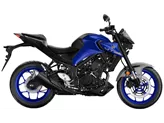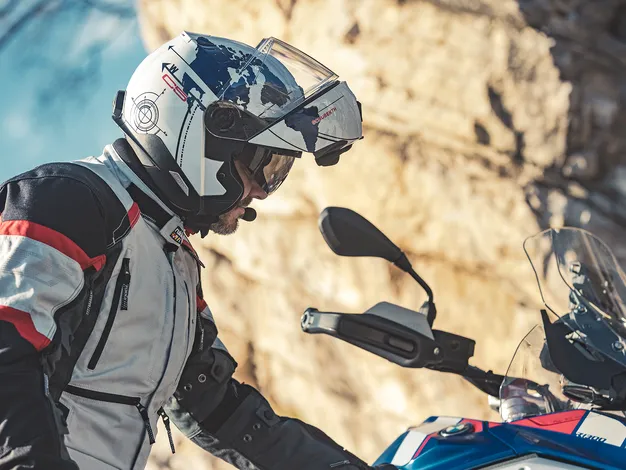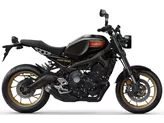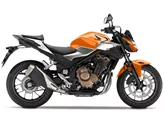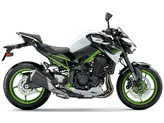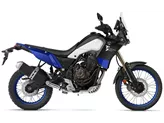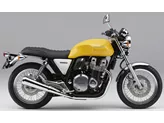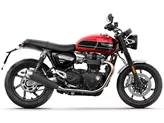Yamaha MT-07 2017 vs. Kawasaki Z900 RS 2018

Yamaha MT-07 2017

Kawasaki Z900 RS 2018
Overview - Yamaha MT-07 2017 vs Kawasaki Z900 RS 2018
The Yamaha MT-07 2017 and the Kawasaki Z900 RS 2018 are both naked bikes that offer a thrilling riding experience. However, there are some notable differences between the two models.
Starting with the engine specifications, the Yamaha MT-07 2017 is equipped with a 689cc in-line twin engine that delivers 75 horsepower and 68 Nm of torque. On the other hand, the Kawasaki Z900 RS 2018 features a larger 948cc in-line four engine that produces 111 horsepower and 98.6 Nm of torque. This makes the Z900 RS more powerful and provides a smoother ride compared to the MT-07.
In terms of suspension, the Yamaha MT-07 2017 comes with a telescopic fork front suspension, while the Kawasaki Z900 RS 2018 is equipped with an upside-down telescopic fork front suspension. The upside-down fork on the Z900 RS provides better stability and improved handling compared to the MT-07.

Yamaha MT-07 2017
Both bikes feature a steel frame, ensuring durability and stability. The braking system on both models consists of double disc brakes at the front, providing excellent stopping power.
When it comes to dimensions and weights, the Yamaha MT-07 2017 has a wheelbase of 1400mm, a seat height of 805mm, and a kerb weight (with ABS) of 182kg. On the other hand, the Kawasaki Z900 RS 2018 has a slightly longer wheelbase of 1470mm, a higher seat height of 835mm, and a heavier kerb weight (with ABS) of 215kg. The Z900 RS is also equipped with a larger fuel tank with a capacity of 17 liters, compared to the 14-liter fuel tank on the MT-07.

Kawasaki Z900 RS 2018
In terms of strengths, the Yamaha MT-07 2017 is praised for its great motor, easy-to-read display, and relatively low price. On the other hand, the Kawasaki Z900 RS 2018 is praised for its powerful and smooth engine, attractive looks, comfortable seating position, and balanced handling. It is described as being neither nervous nor ponderous.
However, there are also some weaknesses to consider. The Yamaha MT-07 2017 is criticized for having a chassis that is too soft, which may affect its handling in certain situations. On the other hand, the Kawasaki Z900 RS 2018 lacks a shift assistant, making gear changes less seamless. It is also heavier than other retro bikes in its class and the seat may be too soft for long tours. Additionally, the Z900 RS lacks wind protection, which may be a drawback for riders who frequently ride at higher speeds.
In conclusion, both the Yamaha MT-07 2017 and the Kawasaki Z900 RS 2018 offer unique features and strengths. The MT-07 is praised for its affordability and great motor, while the Z900 RS stands out with its powerful engine, comfortable seating position, and balanced handling. However, it is important to consider the weaknesses of each model, such as the soft chassis on the MT-07 and the lack of a shift assistant and wind protection on the Z900 RS. Ultimately, the choice between the two will depend on the rider's preferences and priorities.
Technical Specifications Yamaha MT-07 2017 compared to Kawasaki Z900 RS 2018
Pros and Cons in comparison
Pros and Cons in comparison
Yamaha MT-07 2017
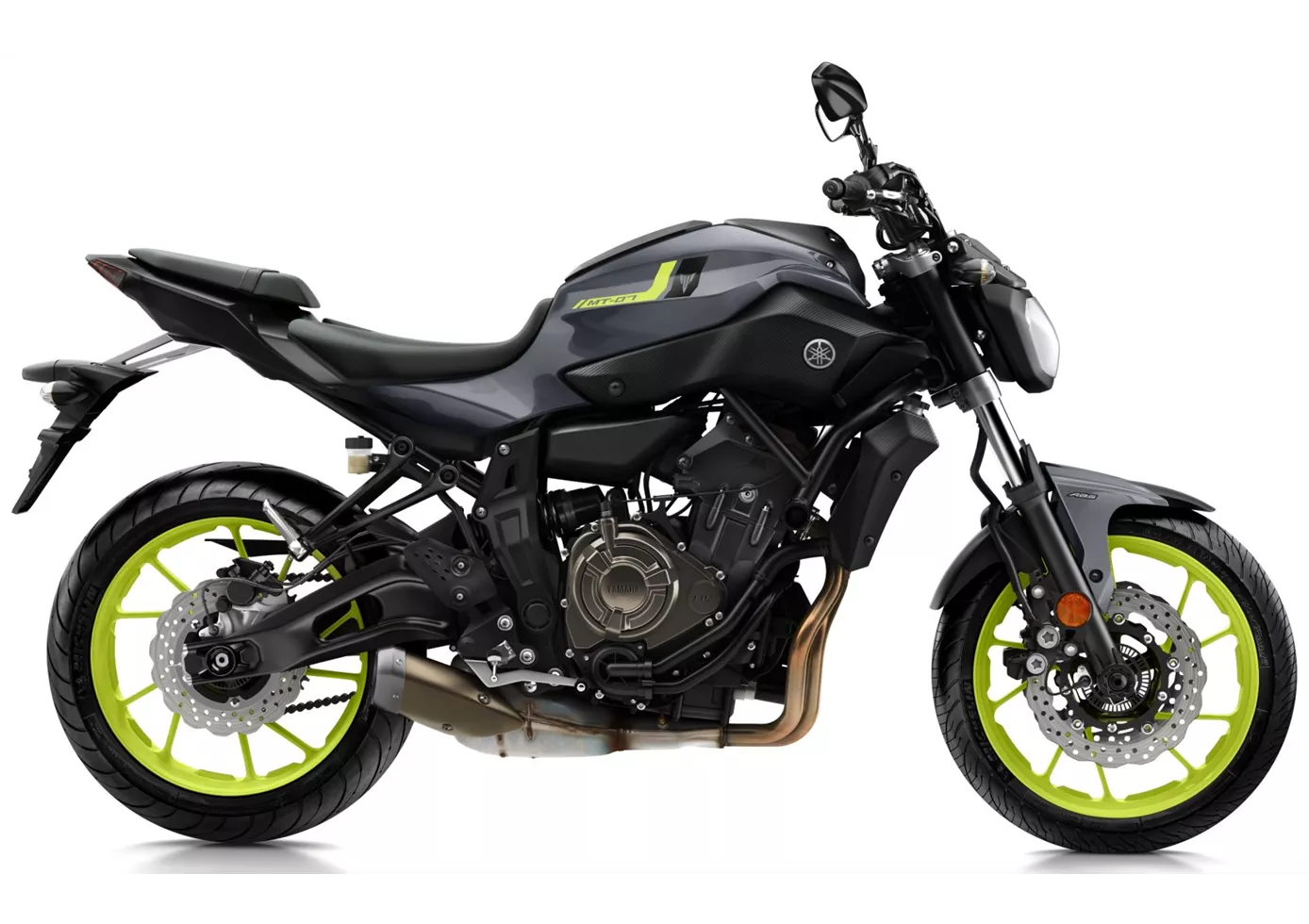
Even after three years, the Yamaha MT-07 is still a public favourite. No one else beats such a price-performance ratio. The two-cylinder engine is powerful, but can be dosed very gently at low revs. The display is also one of the best in this class, with good readability. Only the chassis is disappointing. In a sporty riding style, it is simply too soft, which can cause the MT-07 to sway.
Kawasaki Z900 RS 2018

Its four-cylinder is silky smooth while delivering enough power to make you grin under your helmet. It is also very easy to move, which should make it a great commuter bike in everyday life and serve as an iconic fun bike at the weekend. The looks find the perfect straddle of classic design and modern details to form a coherent retro package that is also a worthy tribute to Kawasaki history. It's a great naked bike with a snazzy look.
Price Comparison Avarage Market Price Yamaha MT-07 vs Kawasaki Z900 RS
There are a few key differences between a Yamaha MT-07 2017 and a Kawasaki Z900 RS 2018. In terms of price, the actual average price of a Kawasaki Z900 RS 2018 is about 82% higher. A Yamaha MT-07 2017 experiences a loss of 240 GBP in one year and 380 GBP in two years of ownership. This is offset by a loss of 910 GBP and 1,080 GBP for a Kawasaki Z900 RS 2018. Compared to Kawasaki Z900 RS 2018 there are less Yamaha MT-07 2017 bikes available on the 1000PS.de Marketplace, specifically 20 compared to 28. It takes less time to sell a Yamaha MT-07 with 83 days compared to 154 days for a Kawasaki Z900 RS. Since model year 2013 1000PS.de editors have written 69 reviews for the Yamaha MT-07 and 26 reviews for the Kawasaki Z900 RS since model year 2018. The first review for the Yamaha MT-07 was published on 04/11/2013 and now has more than 12,600 views. This compares to more than 63,700 views for the first review on Kawasaki Z900 RS published on 06/09/2017.


